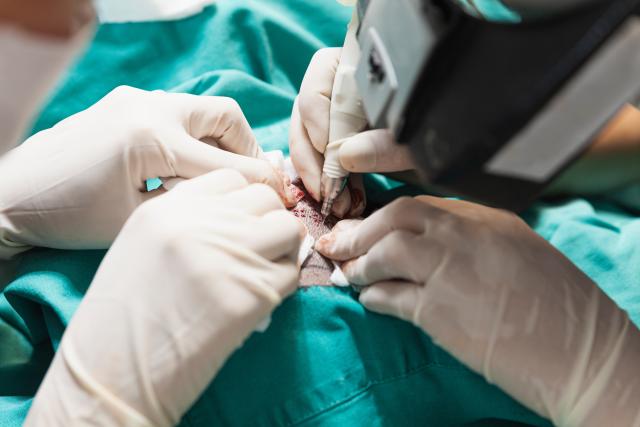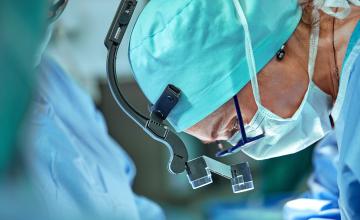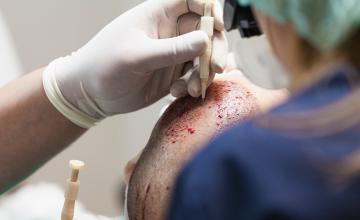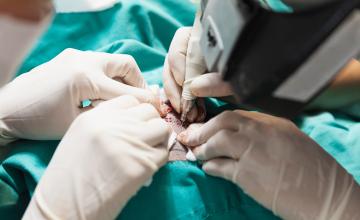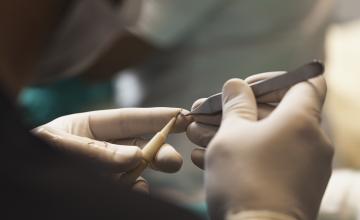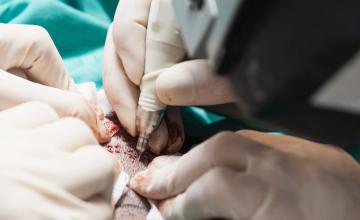Over the past several years surgeons have used various techniques to perform follicular unit hair transplantation. One such technique is the Lateral Slit Technique, also known as Coronal or Perpendicular Grafting. This technique’s name is derived from the angle and direction in which the graft incisions are made.
While there are other techniques for performing densely packed and highly refined follicular unit transplantation, the lateral slit technique offers a high degree of control over the angle and direction in which the transplanted hairs will ultimately grow.
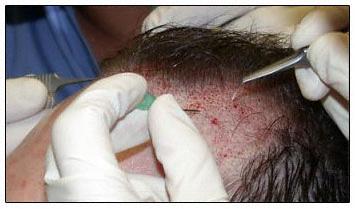
The lateral slit technique has been used both intuitively and systematically for years by hair restoration physicians. However, it has recently gained popularity as a systematic and precise way of performing follicular unit hair transplantation.
How our member physicians use the Lateral Slit Technique.
Many of our physician members use the Lateral Slit Technique exclusively or in combination with other techniques for creating graft incisions. The lateral slit technique enables a surgeon to create graft incisions at varying angles (ranging from 10 to 90 degrees to the scalp), including very acute angles that will make the transplanted hair grow out lying flatter to the scalp. The ability to create incisions at very acute angles is particularly useful in areas such as the front temples and sides where the hair normally grows out lying flat on the scalp.
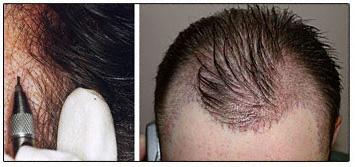
The graft incision determines the direction of the hair growth
The lateral slit technique also helps enable a surgeon to determine the direction of the graft incisions. This then determines the ultimate direction of the transplanted hairs growth. Thus a surgeon can use this technique to control and vary both the direction and angle at which the transplanted hair will grow in order to mimic the subtle changes in hair direction that occur naturally.
Each graft incision is created by analyzing the neighboring hair so the surgeon can reproduce the correct hair pattern. As a result, as each transplanted hair emerges from the scalp it will grow and lay in a similar direction as its neighboring non-transplanted hairs.
Lateral slits can enable denser packing of grafts
Lateral slit incisions also tend to be more parallel to the scalp and thus more superficial and less invasive to the scalp’s underlying vascular structure. This parallel alignment also enables a physician to place more grafts per square centimeter with out the grafts compressing or popping up since the pressure exerted on the grafts does not push them upward from the scalp.
Using blades cut to the size of the grafts
Some of our members use custom blade cutters to create tiny blades to make incisions that match the size and depth of each follicular unit graft being transplanted. This enables a surgeon to safely dense pack more grafts into a given area during a surgical session. Healing time is also more rapid, with minimal scarring.

Typically most clinic’s blades range from 1.5mm to 2mm in size. However, by using the custom blade cutter our physicians can create blades as small as .7mm for a single hair graft and .9mm for a multi hair graft.
In addition, the blades created by the custom cutter are squared off to match the shape of the bulb end of a hair follicle. Non custom cut blades are typically spear pointed which requires them to be inserted deeper thus causing more trauma to the scalps vascular structure.
The ability to control the depth of the incision each blade makes is also critical. Each blade is placed in a blade holder that is set to not allow the blade to go any deeper than required for the graft to being placed in the incision. This minimizes unnecessary trauma to the deep vasculature of the scalp, thus enabling close tight incisions, minimal tissue swelling, and quick healing that leaves no visible scaring, pitting, or cobble stoning of the scalp.
Placing grafts to maximize their aesthetic result and coverage
The plane and direction in which each follicular unit graft is placed on the scalp can also impact the ultimate appearance of density that can be produced with a given number of grafts. This is because hairs within a follicular unit are typically next to each other inline.
Therefore by arranging each multiple hair graft on the scalp in a linear fashion to the line of sight, each follicular unit will provide the maximum appearance of fullness and scalp coverage. This also mimics how hair is normally aligned on the scalp.
Special thanks to Dr. DeYarman, Dr. Sharon Keene, Dr. Jerry Cooley, Dr. Alexander, and Dr. Glenn Charles for contributing their expertise and photos for this section.
